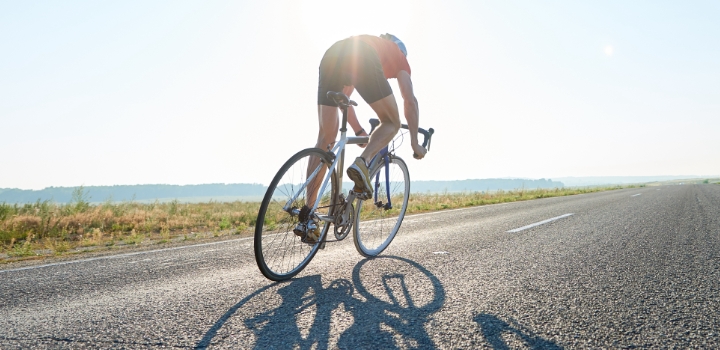
More power, slippery aerodynamics, smooth pedal stroke - these are a few of the technical reasons you may have heard from a serious cyclist as to why one needs a professional bike fit
There is some underlying truth in these, but there a more important reason to have a proper bike fit for cyclists of all levels, and that's comfort. Comfort is crucial to riding better, longer and even faster. Many cyclists believe you need to suffer on a bike, while some people stay away from cycling because they see it as a painful pastime. However, cycling is one of the best sports for avoiding physical stress if your position is appropriate for your flexibility, if functionality is considered, and if your bike is correctly adjusted.
No matter whether you are a weekend warrior, competitive racer or a commuter, all cyclists want to ride with less effort. The correct set up will support your riding efficiency by increasing your power transfer on the pedals and improving your pedal stroke, setting you up to save more energy, beat your friends on Zwift or gain a personal best on Strava. A customised bike fit will give a rider confidence. Optimising body positioning enables the rider to have control which will provide efficient positioning in the corners, climbing and on the trails.
Mechanics matter
Biomechanics is the study of the science of the living body's movement/ This includes how muscles, bones, tendons, and ligaments work together to produce motion. As clinicians, one thing we learn to understand quickly is that no human's anatomy is true to the biomechanics textbook. Everyone's body is unique. Some of us have long legs and short torsos; some struggle to reach their brake levers due to small hands; some people may pedal a little bit differently to others; maybe you have one leg that is slightly longer than the other and you never even knew it!
Appropriate adjustments
In addition, injuries or personal goals can affect how your bike should be set up to maximise comfort, efficiency, and power. Bicycles come in a limited number of shapes and sizes and, as mentioned, cyclists do not. The good news is bicycle manufacturers use adjustable components, allowing their bikes to be customised to fit the rider. A trained bike fitter who understands human anatomy, physiology and biomechanics knows which adjustments need to be made to each components so that human and machine can truly become one.
The fit
Just like a medical consult, a bike fitting session starts by a history being taken. The more detail provided regarding cycling goals, training strategies, mileage and injuries, the better the fitter understands the cyclist.
Next, specific anatomical measurements and biomechanics are assessed off the bike. The cyclist should be measured using static and dynamic tools. These may include digital goniometers, 2D and 3D video analysis and saddle pressure mapping. The trained fitter will understand their tools and use validated devices and measures. They can implement the science of joint angles and ranges to ensure a correct position.
Some of the specific areas systematically addressed include cleat positioning, saddle choice, saddle height and setback, and handlebar reach and drop. However, we are all individuals and being able to manipulate a fit for the individual involves in depth knowledge of the musculoskeletal system and how it functions.
Upgrade means update
Many cyclists will have had a bike fit done previously and then try and carry it over bike to bike, year to year. But our bodies change: flexibility increases or decreases, body mass changes, injuries occur and daily ergonomics may affect posture. It is therefore important to consider a revised bike fit as we progress, age or get a new bicycle.
When changes are made during a bike fit, things may suddenly feel strange. Minor tweaks can lead to a different feel when riding due to different neuromuscular patterns leading to a change in emphasis on the muscles and joints. A new position might demand more flexibility in your lower back or put greater weight through your arms, therefore the fitter should educate the cyclist on how to recognise and deal with the changes. It can take time to adjust to the changes, however, red flags such as acute pain, numbness or saddle sores should be delt with immediately. A cyclist should be made aware of any weaknesses in technique and riding style, and corrections should be prescribed.
It's not all about the bike
The cyclist needs to understand and be aware that it's not always purely about the fitment - a fit cannot cure everything. There is often homework for the cyclist including practising correct techniques and posture while riding, as well as off-the-bike work involving flexibility and strength training. This is where a clinician's advice is particularly useful.
Get riding
When should you get your bike fit? As soon as possible! Having this taken care of will give you and your body time to adapt to changes made to your position and will make your riding more enjoyable.
Dr Craig Uria is the owner of Spine and Sport Centre, a chiropractor, bike fitter, passionate cyclist and current XCM Mountain Bike champion
Contact details:
info@spineandsport.co.za
www.spineandsport.co.za